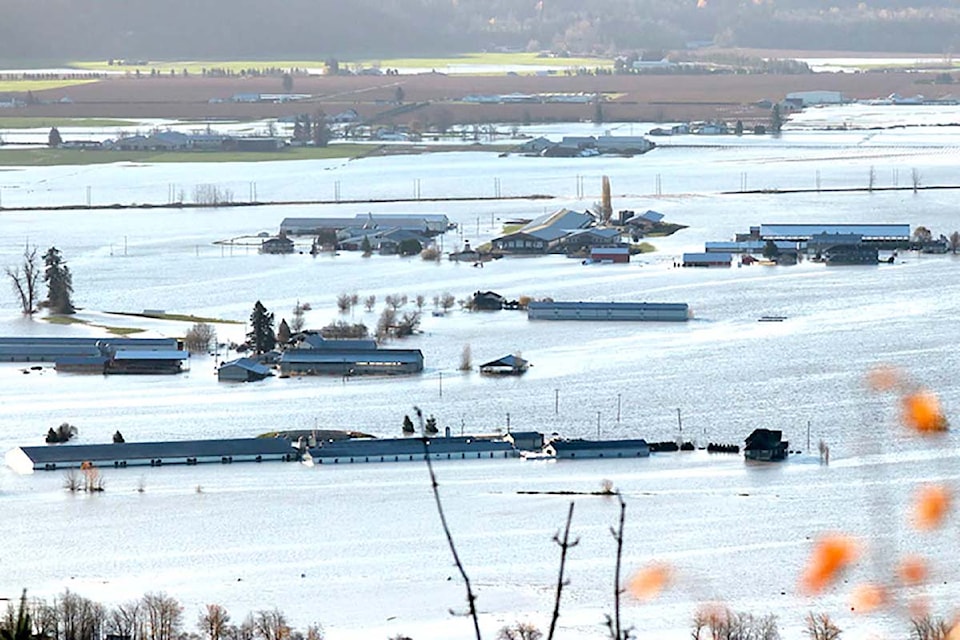A consulting engineering firm working on behalf of the City of Abbotsford says a report suggesting that Sumas Lake be returned to its natural state has “grossly underrepresented” the costs of doing so.
The report, titled Reclaiming the Xhotsa: Climate Adaptation and Ecosystem Restoration via the Return of Sumas Lake, was released June 3 by Frontiers in Conservation Science.
The report states that the cost of buying out properties in the lakebed and allowing the lake to return would be approximately $1 billion – about half the cost of the $2.3 billion projected by the city for its Sumas Prairie flood protection plan.
The Frontiers article states that the land values alone make the return of Sumas lake more economically feasible than the other flood-protection alternatives.
But the firm Kerr Wood Leidal (KWL), which is helping to develop the city’s flood mitigation strategy, said in a report released Thursday (June 20) that the article uses 2020 data from BC Assessment to estimate land value.
RELATED: Abbotsford council supports ‘hybrid’ flood-protection plan, including new pump station
The KWL report says the current market value of land on Sumas Prairie ranges from $140,000 to $475,000 per acre, depending on the size and type of farm.
“All of these values significantly exceed the $63,700 per acre average value implied by the cost and area included in the Frontiers article,” the report states.
KWL estimates the cost of purchasing the almost 6,100 hectares of land in the former lake bottom area at $2.25 billion.
KWL also states the Frontiers article underestimates other costs, beyond land acquisition, that would be associated with the return of Sumas Lake.
Frontiers suggests these other costs could be in the range of $200 million.
“However, retreat from the former Sumas Lake bottom area would be extremely complex, and the suggestion that $200M may be a sufficient allowance for these other costs is misleading ….,” KWL states.
The company states that the other costs associated with a return of Sumas Lake would be measured “in billions of dollars.”
These costs includes reconfiguring existing river systems and associated infrastructure; relocating pipelines and power lines; and redesigning and reconstructing major roads and railways that currently pass through the former lake bottom.
KWL also says that the loss of farmland would amount to more than $1.9 billion for the regional and provincial economy, as well as the loss of more than 3,800 jobs and 5,600 businesses.
KWL says the Frontiers report provides “limited knowledge of the ongoing flood mitigation work being undertaken by the city.”
As well, it makes no mention of the “important discussions” underway in relation to the Sumas River Watershed Flood Mitigation Plan and the Nooksack River Transboundary Flood Initiative, KWL says.
Both reports emphasize the critical need for Indigenous participation, KWL states.
However, KWL praises the Frontiers report for its “valuable and interesting content regarding Indigenous history, perspectives and interests.”
KWL says the restoration of Sumas Lake has been among the options that have come up during flood-mitigation discussions.
“Ultimately, it is recognized that such an initiative is beyond the city’s jurisdiction and would require a senior government ‘champion,’ ” the firm states.
RELATED: B.C. and Washington to work together on Nooksack flooding initiative



